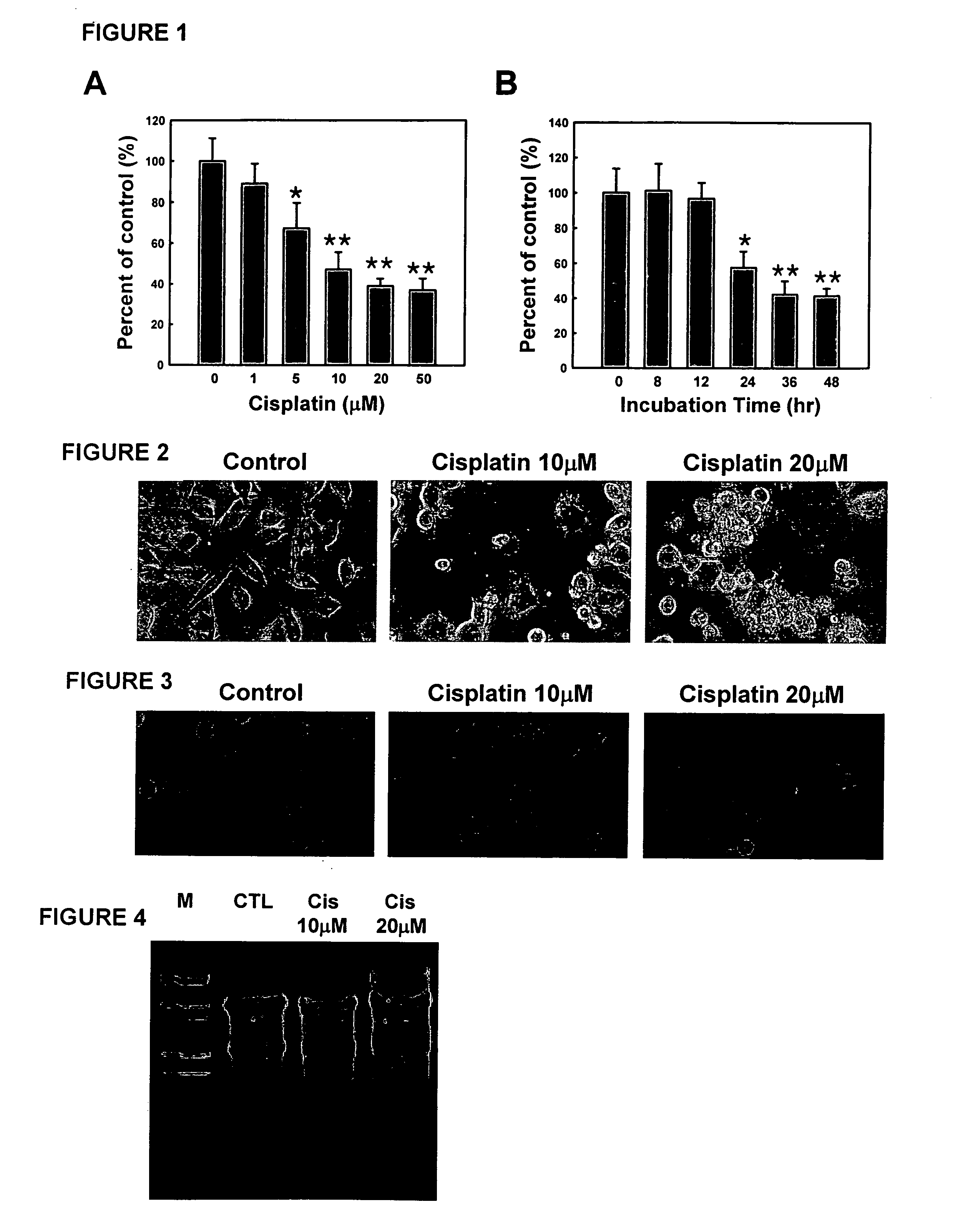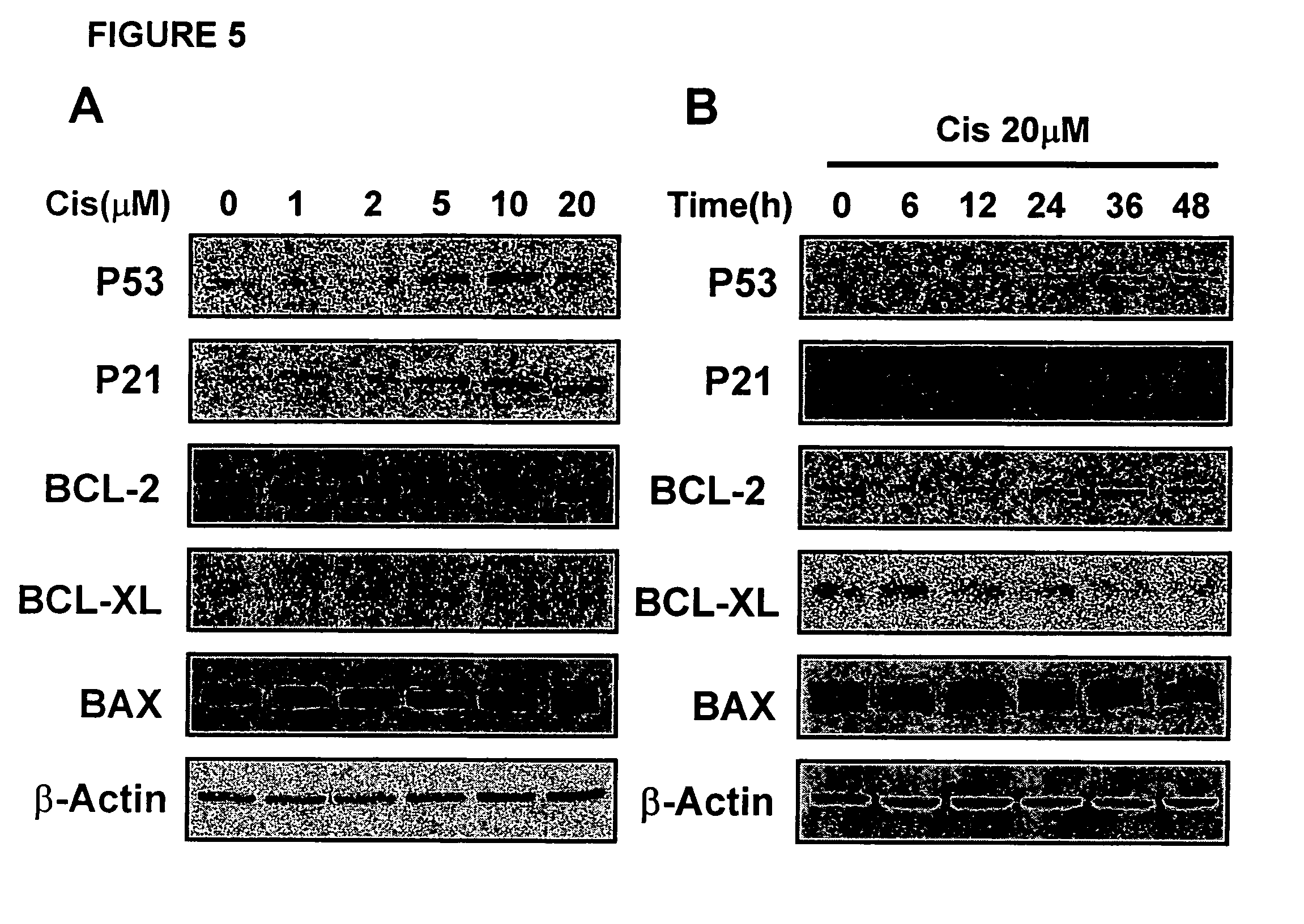Methods and compositions for reducing toxicity of a pharmaceutical compound
a technology of toxicity reduction and pharmaceutical compound, which is applied in the direction of drug compositions, antibacterial agents, metabolism disorders, etc., can solve the problems of inability to safely use agents in humans, the full therapeutic value of some pharmaceutical compounds (e.g., medications, drugs) may be difficult or impossible to realize, and the dosage may have to be limited. , to achieve the effect of reducing toxicity and/or side effects, reducing the intensity of response, and altering the absorption
- Summary
- Abstract
- Description
- Claims
- Application Information
AI Technical Summary
Benefits of technology
Problems solved by technology
Method used
Image
Examples
example 1
Preparation of Bile Acid Solutions
[0069] A stock solution of bile acid was prepared by first dissolving UDCA (60 g) in 500 mL NaOH (6.7 g) solution. Next, to the resulting clear solution, 375 g of maltodextrin was added, portion by portion with vigorous agitation. The pH was then adjusted to between 7.0 and 7.2 by the dropwise addition of HCl with high throughput sonication (750 W, 20 kHz). The volume was then adjusted to 1.0 L with injectable distilled water. Lastly, the resulting clear solution was filter sterilized using a 0.22 μGP express plus membrane under aseptic conditions. Dilutions of this solution to the desired UDCA concentration were prepared according to standard pharmacy practice.
example 2
Characterization of N18D3 Hybrid Neuronal Cell Line
[0070] The stable N18D3 mouse hybrid neuron line was used as a model neuronal cell culture system to investigate the pathomechanisms involved in cisplatin-induced neuropathy. This cell line is a hybrid between a mouse DRG neuron isolated from four-week-old Balb / C mice and the mouse neuroblastoma cell line N18TG2. N18D3 cells were grown in a 6-cm dish with Dulbecco's modified Eagle's medium containing 5% fetal bovine serum and 5% horse serum and incubated at 37° C. in a humidified atmosphere with 5% CO2.
[0071] Clonal N18D3 cells exhibited neuron-like properties not displayed by the parental neuroblastoma. For example, N18D3 hybrid neurons express a specific immunoreactivity to high molecular weight neurofilament protein (NF—H), indicating that they carry neuron-specific phenotypes. N18D3 hybrid neurons also expressed microtubule-associated protein-2 and low and medium molecular weight neurofilaments as shown by immunocytochemistry ...
example 3
MTT Assay
[0072] Cell viability was assessed by measurement of 3-(4,5-Dimethylthiazol-2-yl)-2,5 diphenyltetrazolium bromide (MTT) reduction, which is an indicator of the pyridine nucleotide redox state of the cells. N18D3 cells (1×105) were seeded onto 96-well plates in 0.1 ml of medium and twenty-four hours later were exposed to cisplatin and / or UDCA solutions according to Example 1. Cells were then incubated for pre-selected periods of time in the presence of cisplatin, UDCA, or both.
[0073] Ten microliters of MTT solution [5 mg / ml in phosphate-buffered saline (PBS)] was added to each well, and then the plates were incubated for 3 h at 37° C. After elution of the dye with dimethyl sulfoxide (Sigma), absorbance at 570 nm was measured in a dual-beam microtiter plate reader with 630-nm reference.
PUM
| Property | Measurement | Unit |
|---|---|---|
| pH | aaaaa | aaaaa |
| pH | aaaaa | aaaaa |
| pH | aaaaa | aaaaa |
Abstract
Description
Claims
Application Information
 Login to View More
Login to View More - R&D
- Intellectual Property
- Life Sciences
- Materials
- Tech Scout
- Unparalleled Data Quality
- Higher Quality Content
- 60% Fewer Hallucinations
Browse by: Latest US Patents, China's latest patents, Technical Efficacy Thesaurus, Application Domain, Technology Topic, Popular Technical Reports.
© 2025 PatSnap. All rights reserved.Legal|Privacy policy|Modern Slavery Act Transparency Statement|Sitemap|About US| Contact US: help@patsnap.com



